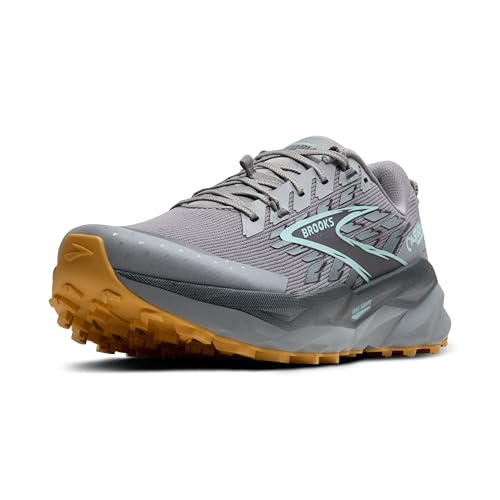Trail Running Shoe Size Chart
Looking for the perfect fit? Check out these Best-Selling Trail Running Shoe.

Trail Running Shoe Size Chart
A trail running shoe size chart helps you select the proper fit for your trail running needs. Proper sizing is crucial for comfort, stability, and injury prevention on uneven terrain. While shoe sizes can slightly vary by brand, here’s a general guide to help you find your correct trail running shoe size for both men and women.
Men's Sizes
| US Size | UK Size | EU Size | Foot Length (inches) | Foot Length (cm) |
|---|---|---|---|---|
| 7 | 6 | 40 | 9.6 | 24.4 |
| 8 | 7 | 41 | 9.9 | 25.2 |
| 9 | 8 | 42 | 10.2 | 25.9 |
| 10 | 9 | 43 | 10.5 | 26.7 |
| 11 | 10 | 44 | 10.8 | 27.4 |
| 12 | 11 | 45 | 11.1 | 28.1 |
Women's Sizes
| US Size | UK Size | EU Size | Foot Length (inches) | Foot Length (cm) |
|---|---|---|---|---|
| 5 | 3 | 36 | 8.5 | 21.6 |
| 6 | 4 | 37 | 8.9 | 22.5 |
| 7 | 5 | 38 | 9.3 | 23.5 |
| 8 | 6 | 39 | 9.6 | 24.4 |
| 9 | 7 | 40 | 10.0 | 25.4 |
| 10 | 8 | 41 | 10.2 | 25.9 |
Children's Sizes
| US Size | UK Size | EU Size | Foot Length (inches) | Foot Length (cm) |
|---|---|---|---|---|
| 10 | 9 | 27 | 6.3 | 16.0 |
| 11 | 10 | 28 | 6.7 | 17.0 |
| 12 | 11 | 30 | 7.1 | 18.0 |
| 13 | 12 | 31 | 7.5 | 19.1 |
| 1 | 13 | 32 | 7.9 | 20.0 |
| 2 | 1 | 33 | 8.3 | 21.0 |
How to Measure for Trail Running Shoes
- Foot Length: Measure your foot from the back of the heel to the tip of your longest toe.
- Size Up: For trail running, consider going half a size larger than regular shoes to allow room for swelling and thicker socks.
- Try Both Feet: Measure both feet and use the larger measurement for sizing.
🏃♂️ Trail Running Shoe Size Chart – FAQs
1. Do trail running shoes fit the same as regular running shoes?
Not always. Trail running shoes often have a snugger fit to improve stability on uneven terrain. You may need to go half a size up if you wear thicker socks or need more toe room on descents.
2. How much toe room should I have in trail running shoes?
You should have about a thumb’s width of space between your longest toe and the front of the shoe. This helps prevent bruised toenails and discomfort on downhill sections.
3. Should I size up for trail running?
Many runners choose to go half a size up to account for foot swelling and thicker trail socks, especially for long-distance runs or ultramarathons.
4. What’s the difference in fit between brands?
Brand sizing can vary slightly. For example:
- Salomon shoes tend to run narrow.
- Altra offers a wide toe box (great for natural foot spread).
- HOKA often has a more cushioned, slightly roomier fit.
Always check each brand’s specific size chart.
5. How should trail shoes fit around the heel and midfoot?
Your heel should be secure with no slipping, and the midfoot should feel supported but not tight. This prevents blisters and improves trail control.
6. Do I need wide or regular width?
If you have wider feet or often feel pressure on the sides, look for wide-width options or brands known for roomy toe boxes like Altra or Topo Athletic.
7. How do I measure my foot for trail running shoes?
- Stand on a piece of paper and trace your foot.
- Measure from the heel to the tip of the longest toe.
- Compare this to the brand’s size chart to find the best match.
Measure both feet—go with the larger one!
🏁 Conclusion
Getting the right fit for trail running shoes is crucial for performance, comfort, and injury prevention. Always check the brand’s sizing chart, consider your sock thickness, and test your fit before hitting the trails. A good fit means better control, fewer blisters, and more confidence over rugged terrain. 🌲👟






